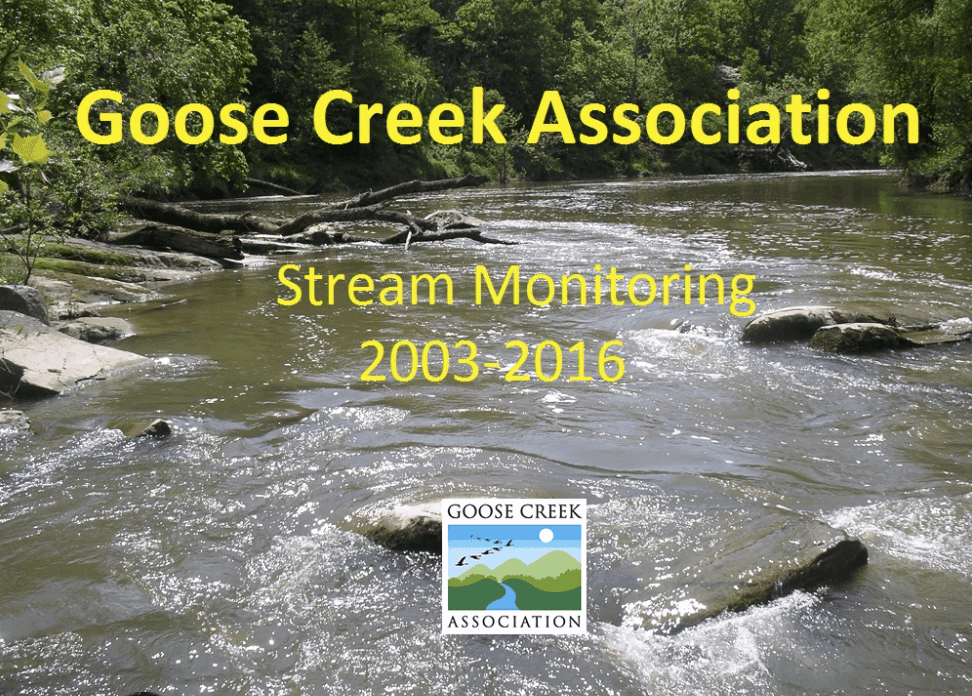Much of northern Fauquier and Western Loudoun counties obtain their drinking water from the Goose Creek watershed and it’s aquifers. In addition, both Fairfax and parts of Leesburg obtain their drinking water from Goose Creek. It is a very precious resource for more than its scenic beauty and ability to provide water for many uses over its entire 350 square mile watershed.
The fundamental mission of the Goose Creek Association is to protect and preserve the natural resources of the Goose Creek Watershed. In order to measure progress, the quality of Goose Creek water is regularly tested by volunteers. GCA volunteers monitor 13 sites: The stream monitoring sites are in both Fauquier and Loudoun Counties.
Each site has its own trained and certified monitor. Our current chair for water quality monitoring is board member Jeff Millington, who manages the training, certification and data organization for our program. The GCA monitors are re-certified every two years to maintain quality assurance. Monitors have a group of volunteers to help them made up of family and friends, and other members of the Goose Creek Association.
Macroinvertebrate testing reflects the health of the stream by taking an inventory of the bugs that live in the delicate stream environment. Data is obtained twice a year, using the Virginia Save Our Streams “Rocky Bottom Method.” After collection, the data is sent to VASOS, Virginia Department Of Environmental Quality (VADEQ), and John Marshall Soil and Water Conservation District to be rated. VADEQ requested using our data as 3rd level data in 2009 and GCA approved the request.
When water quality is good, a stream can support macros that are susceptible to pollution like the stone fly, mayfly and caddis fly. A polluted stream will have many macros that tolerate poor conditions such as midges, leeches and black fly larva.
Chemical testing helps evaluate the stream environment. E-coli testing examines the level of fecal coliform which washes into the creek from nearby livestock, wildlife, and in some cases failed human septic systems.
A survey of the habitat surrounding each of our stations is also taken annually during the month of May.
Click on the image below to see a story map of our monitoring locations.


